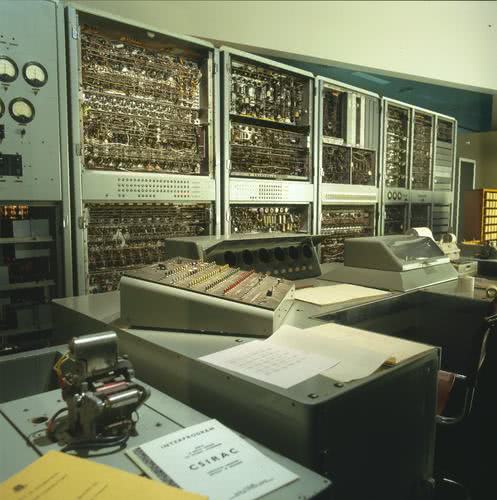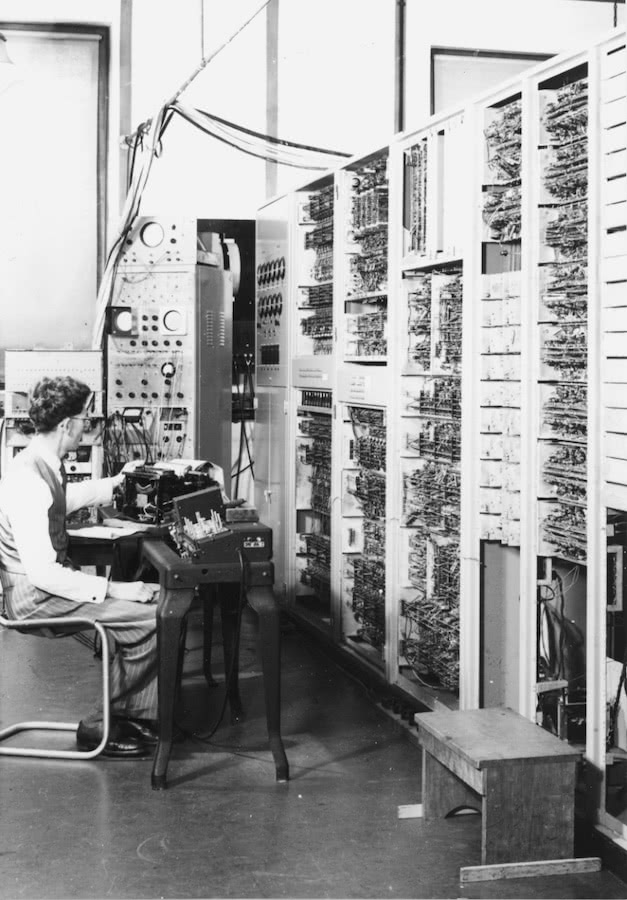The first computer to ever play music was in Sydney

British-born Australian computing pioneer Dr Trevor Pearcey may have led the team that built Australia’s first computer, but he’ll be known forever in our hearts as the scientist who debuted music through a computer.
Dr Pearcey’s project CSIR Mark 1 (later named CSIRAC, the CSIR Automatic Computer) was created at the University of Sydney to transform tasks such as weather forecasting and banking.
It succeeded; in 1949 it ran its first program at a rate a thousand times faster than any other device available in Australia at the time.
In a similar fashion to when the drug Viagra was originally created to treat high blood pressure – yes, we just compared Viagra to music – Dr Pearcey’s digital computer was also the first to ever play music.

Source: Museums Victoria
You see, the seven-tonne CSIRAC had a speaker which played sounds to indicate progress of a program. However, between 1950 and 1951, programmer Geoff Hill successfully created a steady tone from the speakers, thus enabling it to make music.
The music was never recorded, but it has been reconstructed. In 1951 it apparently stunned audiences when it played ‘Colonel Bogey March’ but no actual recording of CSIRAC in action has ever come to light.
Interestingly, the oldest surviving Australian computer was relocated to Melbourne in 1955 where it played music until it was decommissioned in 1964.
Dr Pearcey didn’t just change the game for music, weather forecasts, mortgages, and even computer games, he might have even predicted the internet.

Dr Trevor Pearcey operating the CSIR MK1 Computer in 1951
In 1948, Dr Pearcey wrote: “It is not inconceivable that an automatic encyclopaedic service operated through the national teleprinter or telephone system will one day exist.”
Dr Trevor Pearcey would have been 100-years-old today. It’s apt then that the University of Sydney is celebrating his life today. The event will see a few of Australia’s leading minds explore three of Dr. Pearcey’s prime areas of interest: computing, astronomy and radio physics, and nanoscience.
Register your place for the free event.
This article originally appeared on The Industry Observer, which is now part of The Music Network.






























